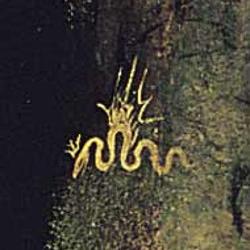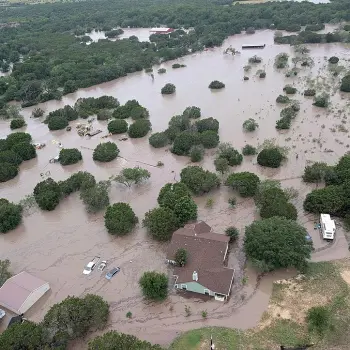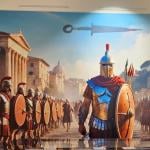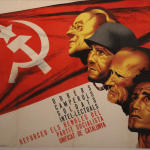As early as the 1540s, Jesuit missionaries came to Japan. The new faith spread rapidly among Japanese from all walks of life, with over 100,000 converts. But beginning in 1587, the ruling Shoguns banned Christianity.
Japanese Christians were required to publicly renounce their faith, often by performing a sacriligeous ritual such as trampling on an image of Christ on the cross. Those who refused would be tortured and killed, often by being crucified. Tens of thousands of Japanese Christians and their missionaries were martyred. (For a vivid portrayal of this time, see the novel Silence. by Shusaku Endo, a modern Japanese Christian.)
By 1614, Christianity in Japan was exterminated. Except for the “Hidden Christians,” those who continued to practice their faith in secret.
Those Hidden Christians are still doing that, having handed down their secret faith generation to generation for more than 400 years!
The Associated Press has published a fascinating article on the Hidden Christians who live in Japan today, mostly on the remote islands surrounding Nagasaki, which had been a center of 16th century Christianity.
On one level, theirs is a stirring story of cultural defiance and religious perseverance. But it is also a sad story of what can happen to Christianity without the pastoral office and the Word of God.
Their numbers dwindling in Nagasaki from 30,000 in 1940 to perhaps as few as 100 today, their Christianity has also diminished. For centuries, they met in secret, conducting baptisms and funerals, but today their religious practice consists largely of venerating icons of Jesus or Mary that have been hidden for centuries, reciting prayers in a Latin they no longer understand, and worshiping their ancestors.
In fact, ancestor worship, a staple of Japanese Buddhism and Shintoism, seems to be their main motive for continuing these Christian observances. Their ancestors did these practices, at the risk of their lives, so they will too.
Christianity was legalized in Japan in the 19th century. Most of the Hidden Christians rejoined the Catholic Church when the priests were allowed to return. But some remained hidden, continuing their secret rites. According to the AP story, this is because the Catholic Church would require them to abandon their syncretistic combination of Christianity and Shinto ancestor worship. The reporters quote 68-year-old Masatsugu Tanimoto, one of the four left in his community who can still recite the Latin prayers, though without understanding them:
“I’m not a Christian,” Tanimoto said. Even though some of their Latin chants focus on the Virgin Mary and Jesus Christ, their prayers are also meant to “ask our ancestors to protect us, to protect our daily lives,” he said. “We are not doing this to worship Jesus or Mary. … Our responsibility is to faithfully carry on the way our ancestors had practiced.”
The reporters (Foster Klug, Mari Yamaguchi, and Mayuko Ono) quote a scholar who has studied the Hidden Christians:
“In a society of growing individualism, it is difficult to keep Hidden Christianity as it is,” said Shigeo Nakazono, the head of a local folklore museum who has researched and interviewed Hidden Christians for 30 years. Hidden Christianity has a structural weakness, he said, because there are no professional religious leaders tasked with teaching doctrine and adapting the religion to environmental changes.
Without the pastoral office, the people ended up conforming to the dominant religious culture of Buddhism and Shintoism even as they attempted to defy it.
I would also say that the elements of Catholicism that survived were the externals that we Protestants have always said were closest to paganism: veneration of images, rituals without understanding, and prayers to the saints (that is, to dead human beings, which arguably could be construed as conceptually similar to ancestor worship).
Something similar happened to Lutherans in Russia, after their pastors were killed. Laypeople kept their faith alive in secret, but they did so by teaching to their children what they had memorized of the Word of God and the Catechism. Thus they transmitted the content of Christianity, not just its external forms.
Illustration: The 26 Martyrs of Japan at Nagasaki (1628) by Wolfgang Kilian – MDZ: Münchener DigitalisierungsZentrum, Digitale Bibliothek, http://daten.digitale-sammlungen.de/~db/0006/bsb00064463/images/index.html, Public Domain, https://commons.wikimedia.org/w/index.php?curid=18622003













